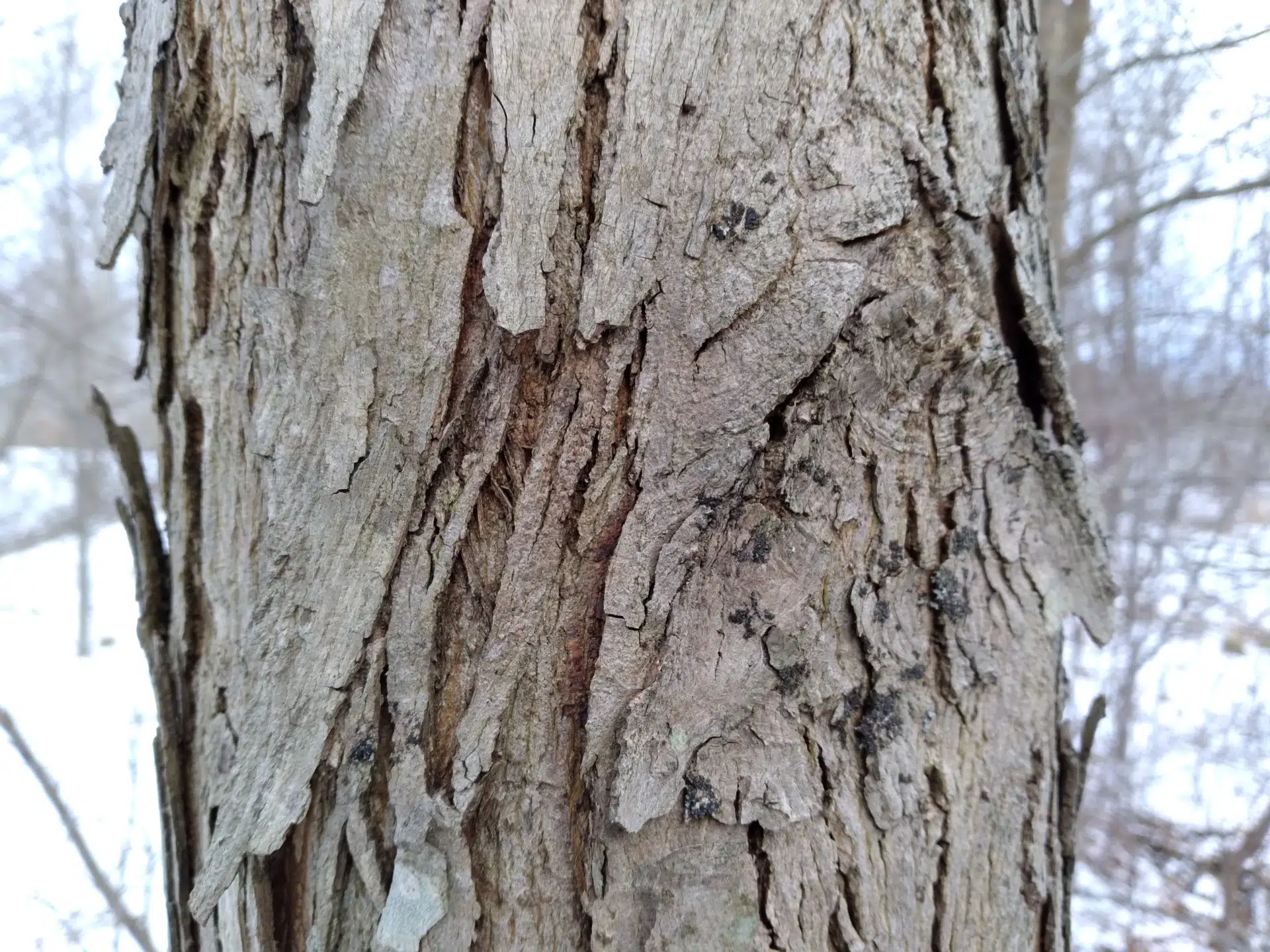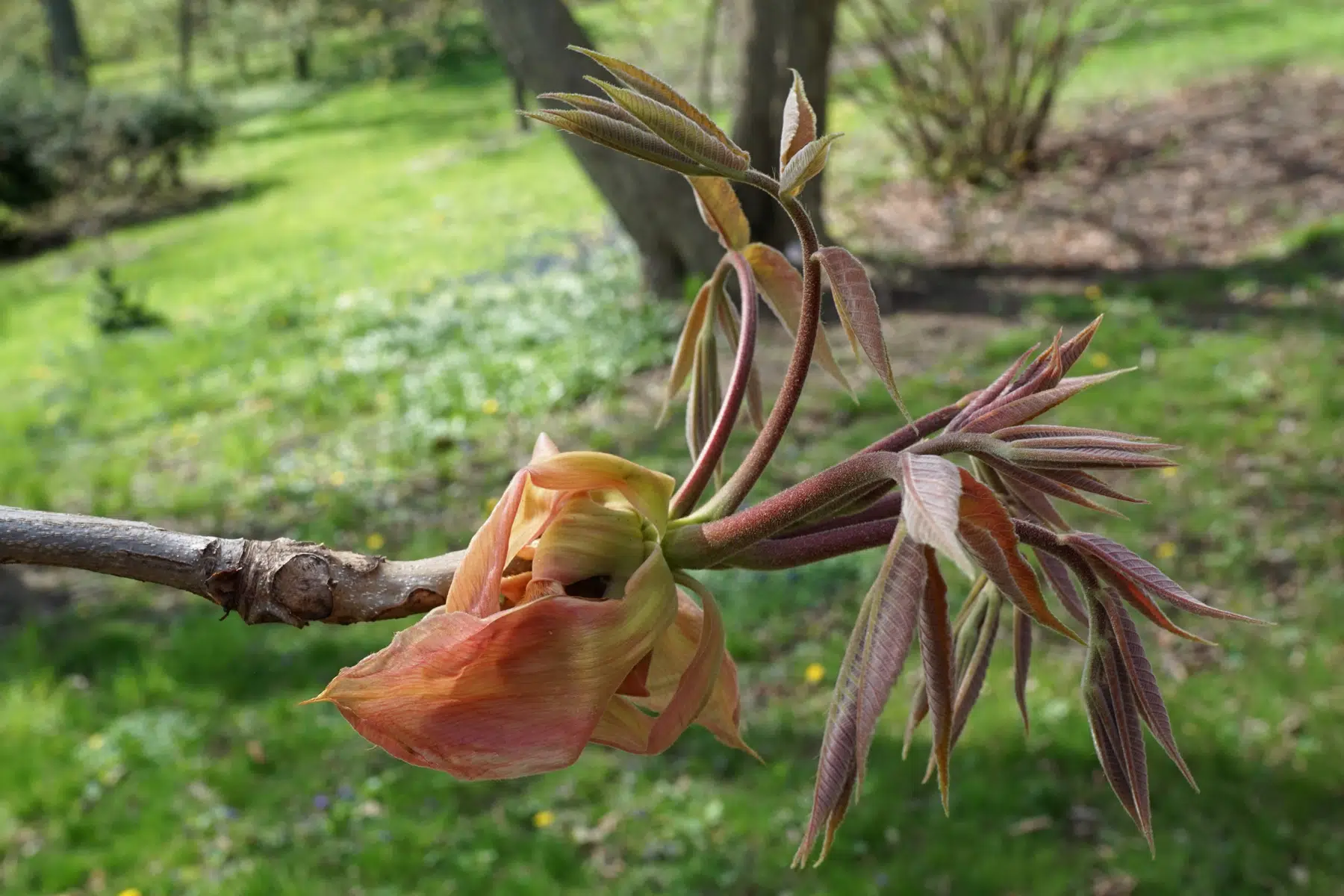Nature Profile
Trees
Carya laciniosa (shellbark hickory)
Carya laciniosa



Shellbark hickory, a.k.a. kingnut is native from western New York to Iowa, south to Georgia and Texas. Although widely distributed, it is not common, certainly not in Holden’s natural areas where it is absent. The closely related Holden native shagbark hickory (Carya ovata) usually has five leaflets in contrast to the seven to nine leaflets that are typical for shellbark hickory leaves. In Ohio, shellbark hickory is found exclusively on moist soils of floodplains and bottomlands.
In the floodplain section of the Myrtle S. Holden Wildflower Garden are three young shellbark hickories collected as seed in 1991 from Ashtabula County, Ohio. Planted in 1999, the tallest of the three is west of the north entrance to the garden and south of the work road. In 2021 it measured 48 feet in height with a diameter at breast height (DBH) of 8.6 inches, and a spread of 24 feet. The other two are north and west of the work road measuring 34’, 6.4”, 22’, and 33’, 7.0”, 21’ in 2021. Their bark is starting to get a bit “shaggy”. On young trees the bark just above the root flare is reminiscent of pecan (Carya illinoinensis). Two of our young trees started producing nuts in 2021, making them somewhat precocious as forty years can pass before nuts are produced in the wild.
Shellbark hickory quickly develops a taproot, so seedlings require special containers and even in those they should be planted out as quickly as possible for best results. Five other seedlings planted in 1999 at Holden did not establish in areas outside the Wildflower Garden. Trees typically grow 70-80 feet tall in the landscape with a lesser spread, but in the wild they reach 100 feet or more. Shellbark hickories should not be planted next to a building or a drive as the nuts can do damage when they fall or are dropped by a squirrel.
Ethan Johnson, Plant Records Curator
January 2022
[Photo: Carya_laciniosa_(Shellbark_Hickory)_(33645990633); Credit: Plant Image Library from Boston, USA, CC BY-SA 2.0 <https://creativecommons.org/licenses/by-sa/2.0>, via Wikimedia Commons]




